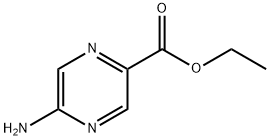The recent controversy surrounding the $500 million headquarters of the United States Institute of Peace (USIP) has raised pressing legal and governmental concerns. On Tuesday, U.S. District Judge Beryl Howell confirmed that the building had already been transferred to the General Services Administration (GSA), effectively dismissing legal opposition as moot. This decision follows a series of contested events, including the firing of USIP’s voting board members, the takeover by Elon Musk’s Department of Government Efficiency (DOGE), and the swift transfer of the building at no cost to the government. With legal battles ongoing and concerns about property rights unresolved, a critical question arises: How will the construction industry and chemical engineering factors come into play if GSA repurposes or renovates the facility?
DOGE's $500 Million Building: How Does the Building and Transfer of Property View from a Legal and Chemical Perspective?
Related Products More >
-
- CNY equest For Quotation
-
- CNY equest For Quotation
-
- CNY equest For Quotation
-
- CNY equest For Quotation
-
- CNY equest For Quotation
-
- CNY equest For Quotation
-
- CNY equest For Quotation
-
- CNY equest For Quotation



 沪ICP备2021018848号-5
沪ICP备2021018848号-5

The GSA's justification for the transfer was that it needed the office space but couldn't afford to acquire it at fair market value. However, USIP lawyers reject the government's claim that it is a "wholly - owned government corporation" and thus within GSA's rights to transfer the property. Judge Howell has not yet been convinced by either side's argument, and the fate of the building, along with the reinstatement of the board, will be decided in an expedited summary judgment.
Now, let's consider the building itself. A structure of such high value, like the USIP headquarters, is not just a simple assemblage of bricks and mortar. In the construction industry, numerous chemical and chemical - engineering principles come into play. Cement, a fundamental building material, is a complex mixture of calcium - based compounds. Portland cement, for example, is made by heating limestone (calcium carbonate, CaCO3) and clay (which contains aluminum - silicate minerals) in a kiln at high temperatures. The resulting product, when mixed with water, sand, and gravel, forms a paste that hardens over time through a process called hydration. This chemical reaction creates a strong and durable matrix that binds the aggregates together, providing the strength and stability necessary for large - scale construction.
Steel, another essential component in modern buildings, also involves chemical engineering. Iron ore is first smelted in a blast furnace to remove impurities and convert it into pig iron. Then, through a series of processes, such as the basic oxygen furnace process, carbon and other elements are carefully adjusted to create steel with specific properties. Alloys like stainless steel, which contains chromium (Cr) and nickel (Ni), are used in areas where corrosion resistance is crucial, such as in the building's facades or interior fixtures. The chromium forms a thin, protective oxide layer on the surface of the steel, preventing rusting.
Paint, used for both aesthetic and protective purposes, contains various chemical compounds. Pigments, such as titanium dioxide (TiO2), provide color and opacity. Resins, which are organic polymers, act as binders, holding the pigment particles together and adhering the paint to the surface. Solvents, like volatile organic compounds (VOCs), help to dissolve the resin and pigments, making the paint easier to apply. However, due to environmental concerns, there is a growing trend towards using low - VOC or VOC - free paints.
Insulation materials are also important in a building of this scale. Materials like fiberglass, made from silica (SiO2) and other minerals, are spun into fine fibers. These fibers trap air, which is a poor conductor of heat, thus providing thermal insulation. Chemical additives are often used to improve the fire - resistance and durability of these insulation materials.
As the legal battle over the USIP building continues, one must wonder: how can the government justify taking over a building that likely involved such a complex and costly chemical - based construction process, especially when there are disputes over its ownership and classification?
To understand the full scope of this issue, it's essential to delve into the background. On March 14, the Trump administration summarily fired the USIP's 10 voting board members, effectively dismantling its governance structure. This move was followed by a physical takeover of the headquarters building by DOGE employees, who gained entry using a key obtained from a former security contractor. The situation escalated when most USIP staffers received termination notices, bringing the agency's operations to a grinding halt.
The legal battle ensued, with former USIP staffers filing a lawsuit to challenge the legality of the takeover and the subsequent transfer of the building. In court documents, it was revealed that Kenneth Jackson, a former State Department official, was installed as USIP president before being replaced by Nate Cavanaugh, a DOGE staffer. Cavanaugh then initiated the process of transferring the building to the GSA, claiming it was in the best interest of all parties involved.
However, the transfer has not been without its challenges. George Foote, a longtime outside general counsel to USIP, has expressed his confusion and frustration over the situation. He likened the transfer to a burglar breaking into a house and stealing a TV, with the court unable to adjudicate the matter because the TV was already gone. This sentiment underscores the complexity and ambiguity surrounding the legal aspects of the case.
Adding another layer of intrigue is the chemical engineering perspective. The construction industry relies heavily on various chemical compounds and materials to ensure the durability, safety, and functionality of buildings. The USIP headquarters, like any other modern structure, would have been built using a plethora of chemical materials. For instance, concrete, a fundamental building material, is a composite of cement, water, sand, and gravel. The cement used in the construction process undergoes a chemical reaction known as hydration when mixed with water, resulting in the hardening and strengthening of the concrete.
Moreover, the building's structural integrity would depend on the use of steel reinforcement bars, which are primarily composed of iron with small amounts of carbon and other elements. The properties of steel, such as its high tensile strength and resistance to deformation, make it an ideal choice for reinforcing concrete structures. Additionally, the building's exterior cladding, windows, and insulation materials would also be composed of various chemical compounds designed to enhance energy efficiency, weather resistance, and overall durability.
The legal battle over the USIP headquarters raises several pertinent questions about the classification of the agency and the legality of the transfer process. Judge Beryl Howell has expressed her skepticism regarding the arguments presented by both sides, indicating that the issue will be more fully addressed in subsequent legal proceedings. She noted the ambiguity surrounding USIP's proper classification as an "independent establishment" or "Government corporation," which falls outside or within the executive branch.
From a chemical engineering standpoint, the transfer of the building also raises questions about the potential impact on the materials and systems within the structure. For instance, any disruption to the building's maintenance and upkeep could lead to degradation of the concrete, steel, and other materials over time. Additionally, the transfer process itself may involve the use of various chemicals and materials, such as cleaning agents, sealants, and coatings, which could potentially interact with the existing building materials.
If the building undergoes modifications or repurposing, key chemical materials will play a significant role. From structural reinforcements to fireproofing, various chemical compounds are essential to maintaining and upgrading a government facility of this scale. Here are some critical chemical materials used in large-scale building renovations:
Concrete and Reinforcements:
Calcium silicates are crucial in cement formulations, ensuring strength and durability.
Epoxy resins serve as bonding agents for concrete repair and reinforcement.
Fireproofing Materials:
Aluminum hydroxide and magnesium hydroxide are common flame-retardant additives.
Boron compounds, such as boric acid, are used in fire-resistant coatings.
HVAC and Insulation Systems:
Polyurethane foams provide thermal insulation.
Chlorofluorocarbons (CFCs) and their alternatives play roles in refrigerants, although more sustainable options are now being explored.
Protective Coatings and Sealants:
Silicone-based sealants offer waterproofing solutions.
Acrylic polymers are used in weather-resistant paints and coatings.
Glass and Window Upgrades:
Silica-based glass formulations provide durability and thermal efficiency.
Low-emissivity (Low-E) coatings, often containing silver oxide, enhance energy efficiency.
Legal and Structural Challenges
While the chemistry behind building materials ensures structural integrity, legal uncertainties complicate the future of the USIP building. USIP’s legal team maintains that the institution’s headquarters was partially funded through private donations and endowments, making its transfer to GSA legally questionable. If the courts rule in USIP’s favor, recovering the property could involve complex title disputes, complicating any planned renovations.
Additionally, GSA’s financial limitations, as highlighted in internal documents, suggest that large-scale renovations may not be feasible in the immediate future. This raises further questions about whether the government intends to repurpose, lease, or sell the property.